In the June 2002 issue, I detailed some fundamental methodologies for propagating corals, and so it stands to reason that an article on methods for securing the resulting divisions follows suit. For many ambitious coral farmers, propagating corals can be summed up with a flip utterance, "Saw it, fragged it… licked the salt off my hands!" Well… that, of course, is a ridiculous statement. I would never personally condone such an unsanitary act without lemon wedges and a fifth of top shelf tequila. But, enough about how I personally propagate coral. Here, I intend to proffer advice and wisdom to aquarists on some of the most popular methods for attaching fragments of coral to a hard substrate. Methods for securing hard or soft coral are likely to fall within one of the following categories:
Tying, Banding and Stitching Coral Tethering corals by tying, banding or stitching might be the most effective method for securing the broadest range of propagated hard or soft corals with reasonable to very good rates of success. It almost assures sound mooring of coral divisions the first time. In contrast, glues and epoxies, for example, may require occasional to frequent re-application (as with heavily mucous species and others with more fickle changes in their hydrated mass from polyp cycles). Nylon thread (or monofilament fishing line), natural rubber bands and plastic cable ties (AKA "zip ties") are the most common fasteners. Indeed, there are many imaginative varieties of fasteners applied to coral by farming aquarists. Even when aesthetically unattractive, fasteners are usually a temporary solution while waiting for subsequent natural attachment of a new fragment. They will be overgrown or unnecessary (and can be removed) after a modest wait for new coral tissue to anchor the division. Of all the many ways listed above (and beyond) for fixing newly fragmented divisions, stitching with plastic thread or wire is one of the fastest, safest and surest ways of securing corals. Most soft coral that are fragmented can be stitched with a needle and plastic thread with little effort or time. If you are willing to drill a small thread hole in scleractinian skeletal mass, many stony corals can be fixed quite assuredly in like fashion (and it gives you another reason to get out the electric rotary tool!). Corals stitched with one or two threads through the stalk and tied off to a hard piece of rock or rubble are surely secured. They cannot be lost to volume changes of the fragment due to polyp expansion and contraction. Neither can they be easily displaced by water currents, or by the activities of fish and motile invertebrates. Indeed, a soft coral fragment may shrink away from glue or epoxy. Likewise, it can be carried by currents out of and away from collars, cups and troughs, but a stitch through the trunk of an octocoral provides a secure anchorage. This method may be done as quickly or faster than any other method of attachment for coral frags, and I highly recommend it for heavily mucous species that will not tolerate either excessive handling or widely constrictive fasteners. Indeed, stitching is one of the surest ways to attach "difficult" settling species such as green and yellow "finger and toadstool leathers", Sarcophyton and Sinularia, as well as Klyxum (AKA "Colt" coral… formerly Alcyonium), Cladiella and Neptheids. Common, branching soft corals in general respond very well to stitching. Using a needle, fine plastic thread (nylon sewing thread or clean fishing line) is readily available to most any aquarist, easily applied and has he added benefit of affording reduced handling time of corals. Fastening can be conducted under water and requires no additional preparatory steps. The pictures below are hardly instructional; the act of sewing a coral to a piece of rock is rather self-explanatory. Instead they are proffered for encouragement that the application of a stitch to fasten a coral to a rock really is as straightforward as it seems. The photos also serve as a reminder why heavily mucous species of coral are best served by stitching. Please note the heavily viscous mucus issued from this soft coral in mere seconds after the imposed fragmentation! Clearly, this animal could not be handled easily without an instrument like tweezers. Such heavily mucous species obviously cannot be superglued or epoxied to a dry substrate. Even if they could, I propose that when a brief stitch is applied so quickly and with little intrusion, it is a preferred method of attaching soft corals to hard substrates.
While a discreet stitch is the least invasive method for tethering a fragmented coral, elastic natural rubber bands are also effective fasteners too. They are used to hold a coral division in place against a hard substrate ("live rock", corallum, ceramic, plastic, aragonite, etc.) while waiting for natural attachment of the division. A healthy coral will usually generate sufficient new tissue within a few weeks to anchor the specimen. A natural rubber band will rather conveniently dissolve in seawater in less than a month, sparing the appreciative farming aquarist the need to remove it. The elasticity of rubber bands allows them to ride the fluctuating volume of coral tissue through inflating and deflating polyp cycles before the division becomes firmly anchored. Some aquarists like to sandwich a fragment between two small pieces of substrate, while others simply band a division against a single piece of rubble or like medium. Sandwiched divisions need to be oriented in such a manner as to receive maximum water flow and light, while still being held securely. An appropriately sized thin rubber band will just barely constrict a fragment to prevent dislocation with the currents. Thicker bands deprive a division of normal diffusive functions over a greater surface area (under the band) and slightly increase mortality and infection from anoxia and increased mucus. An elastic band that is too tight will sharply constrict a fragment and may actually cut through a division successfully before the fragment has a chance to attach. This means that two fragments instead of one will be lost, blowing around an aquarium with the currents! Unpigmented, natural rubber bands are harmless and non-toxic. They may not be pretty, but they are inexpensive, easy to apply and remove quickly and may be used on a majority of popular hard and soft corals with reasonable to good success for attachment. In grossly generalized terms, SPS and weakly mucous soft corals respond quite favorably to such banding while LPS, zoantharians and heavily mucous soft corals do not. Scleractinian species, and many octocorals, are more suitably affixed to a hard substrate by simply tying them to it with non-elastic fasteners like plastic cable/"zip" ties or nylon filament. This is due to the unyielding rigidity of the scleractinian's corallum that prevents any displacement of the animal under an inflexible tie. Soft corals suitable for tying are those not quickly changeable in volume from "hydration"/polyp expansion and usually have large, densely fused spicules which lend necessary rigidity to their form, for example, Nepthyigorgia "chili corals", some Sinularia and Dendronephthya. Even non-scleractinians such as Heliopora and Millepora respond favorably to this simple method of securing a division and can quickly overgrow a thread to look quite natural in form after a short time. As with rubber bands, because of the reasons listed above, thinner is better when used to simply tie down a fragmented division of coral. Plastic cable ties are also used to facilitate a compound attachment, in some octocorals where the tie is used to slowly constrict and pinch off a soft coral division, which attaches to the fastener before the separation is complete. After the branchlet finally drops, the attached fastener serves, at the very least, as a handle to avoid touching the new division. It may be attached to a permanent substrate by gluing to or threading the tie through a hard surface, or simply weighting down a tethered fragment. Cable ties are effective but cumbersome and unsightly for most SPS corals. Fine nylon thread or monofilament line is likely to be more aesthetically discreet. Cable ties may be quite useful, however, to secure LPS corals by drilling an inconspicuous region of the skeleton to thread plastic ties through like stitching rockwork. As with the use of rubber bands, temporarily fastening coral by tying it with plastic straps/ties or thread may not be pretty, but it is effective. Adhering Corals with Cyanoacrylate Glue Glues and epoxies are marketed heavily and are popularly employed in coral propagation, but not all truly adhere corals to a medium. Adhesion is the formation of a bond between two surfaces: "sticking together", one might say. Cyanoacrylate glue is one of the few "glues" in coral propagation that properly fits this description. In contrast, epoxies, cements and hot glues more accurately capture corals by pouring in form (or being molded in form) around a specimen and then curing hard to hold a fragment in place. They do not, however, actually "stick" to living tissue in a proper bond like cyanoacrylate glue can. Cyanoacrylate (superglue) has been heralded like the eighth wonder of the world for attaching coral categorically. Many aquarists read in aquarium literature and hear about the convenience of using this product, but experience with it is often met with frustration, disappointment and a lost coral fragment blowing around the aquarium. Quite frankly, I do not understand or agree with all of the hubbub surrounding this technique especially as it pertains to species other than SPS scleractinians. I have handled many thousands of fragmented divisions of soft and hard coral (secured with various techniques), and find the process of gluing with cyanoacrylate to be tedious, at best, for many popular coral species. I have listened to more aquarists than not complain through the years about difficulties with utilizing this technique that really cannot be attributed to procedural faults. Defenders maintain that there is a very specific protocol (that is ironically quite variable among the defenders) for attaching soft corals with cyanoacrylate glue. Please forgive me, but I am just not willing to buy into the hype of a ten-step procedure for getting super glue to set that involves a Tibetan Sherpa, a stick of chewing gum and a roll of duct tape. Indeed, I am exaggerating here for the purpose of a bit of humor, but still I mean to relate that the application of cyanoacrylate glues to living coral is often misunderstood or misapplied by aquarists. The time required to apply such glue is no faster than a simple elastic band or tie/stitch and it certainly is not as reliable (where a stitch works the first time, every time… cyanoacrylate may need to be re-applied). As super as it may be around the household, it is not a universal adhesive for most or even many corals. Cyanoacrylate glue can indeed be very useful for some coral like SPS species, but it is ultimately very challenging to employ with many other corals. It seems to work best with surfaces (living or not) that can easily be patted dry and handled out of water for some time without suffering or secreting much mucus, such as the broken edge and exposed corallum of stony corals, the woody gorgonin stem of a gorgonian and the rough surfaces of many "leather" corals. These are very fine places to which one may easily and successfully bond cyanoacrylate glue to another surface. One of my favorite applications of cyanoacrylate glue is upon the underside of stoloniferous corals ("mat" formed like Star polyps) for setting sheets of living coral in place upon the aquarium's vertical back and side walls (temporarily drop water level to do this). Other artifacts of the aquarium system like plumbing/pipes and overflow wells may be covered in like kind with a living veil of coral by cyanoacrylate glue. Yet, other corals still, like individual zoantharians (button polyps or mushrooms anemones) and "slimy"/mucous corals like "Colt" coral (Klyxum), are very challenging to secure anywhere with cyanoacrylate and are best anchored by other means. With the intention of trying to keep this article shorter than the preamble to the Constitution Capturing Fragments with Cement and Epoxy As mentioned above, epoxies, cements and hot glues are used primarily to capture coral within the hardened (cured) constraints of a poured or molded form. Some popular products include two-part underwater epoxy, dental cement, hydraulic cement (expanding/fast-setting), and even common Portland cement. They do not actually adhere to coral tissue, although this does not make them any gentler on living tissue. Their chemical curing processes, while hardening, may be irritating to some coral and fish. By and large they are safe to use, but some fish and coral have demonstrated severe and even rare fatal reactions to these applications in seawater. For most aquarists practicing good aquarium husbandry, such as water exchanges, protein skimming and good chemical filtration especially after coral propagating events, problems will be very rare with such products. Naturally, anecdotal reports about deleterious reactions do not oblige manufacturers to disclose warnings with products or packaging. Aquarists with small-scaled and scaleless fishes (firefish, mandarins, lionfish, etc. as well as sharks, skates and rays) should already be conscientious of the sensitivities of such fishes overall to medications, metals, additives, etcetera in their charge, and demonstrate due preparedness in aquarium husbandry. Disclaimer aside, securing corals to a substrate with cement and epoxies can be quite useful and safe in many applications. I have used underwater epoxy and cement in various applications and find it to be quite useful for many aspects of aquariology such as securing rock, or coral. It is especially helpful with coral and structures in need of a stronger union as with larger divisions of coral or those to be anchored in areas of dynamic water flow. Indeed, such cements are appropriate for the more substantial needs of gluing large rocks and corals, and as such have their place in the hobby. My only reservation for using such products on a larger scale than home aquarist or backyard/basement coral farmer is that the epoxies are too expensive and the cements are too labor-intensive to be useful in commercial endeavors. The application of each product varies, but in gross terms, a portion of cement or epoxy is necessarily forced into cracks and crevices on an irregular surface such as live rock. Smooth surfaces are less likely to form good bonds once cured. By penetrating into irregular surfaces, these products can harden to form very strong, finger like grips on substrates. Before curing, a division of coral is pressed into the medium with some of the cement or epoxy molded up and around the fragment if possible to help capture/curb it. The hardening time varies with each product, but is generally less than fifteen minutes and can often be completed under water. Full curing may take up to 48 hours. To prevent any deleterious curing byproducts from entering the "home" tank, it may be helpful to allow the curing to complete in a remote holding vessel, such as like a water bath. Containing Corals with Natural and Artificial Barriers Securing corals by methods of containment can involve positioning many different items to create a barrier. Aquarists have learned to become quite inventive by necessity while pioneering coral farming techniques. Common materials for this purpose may include: PVC collars/pipe segments, plastic cups, shallow glass jars, plastic or nylon netting (like rain gutter guard, bridal veil, fruit mesh, etc.), clear plastic tubes, floral picks, and even holes drilled in rock or other substrates. Some aquarists arrange small pieces of scleractinian rubble around coral in wait for attachment in a fashion that might resemble rocks around a campfire. This method is also used to contain a vigorous or overgrowing species of coral from encroachment on neighboring cnidarians. Millepora, encrusting and stoloniferous corals like Star polyps, zoanthids like yellow polyps/anemones, and Xeniids are just some of the many fast growing cnidarians sometimes in need of being kept at bay, so to speak, by just such a rubble "firewall". Even a cursory glance on the Internet will reveal these and many other useful methods of containment for fragmented and unsecured corals. The goal of containment is to reduce disturbances from water flow or macro-organisms pending natural attachment while affording maximum and hopefully unfiltered illumination in the process. Such methods can be highly recommended for commercial and small-scale operations alike, as materials for containment are generally inexpensive or reusable and have little impact on operational expenses. Some of the most dynamic effects in reef gardening can be made with containment techniques. PVC collars and clear tubes can be used, for example, to trap coral fragments on the rockscape in precarious and dramatic locations. One of the most popular exploitations of this technique is to place various colored zoantharians (colored button polyps or mushroom anemones) in a wild array of colors in relative close proximity. A veritable living rainbow of color. Likewise, various corals may be settled on the facial/vertical edges of great spanning arches or atop the overhang of a cave, for example, all with the strategic placement of lift tubes and collars as methods of containment. Short segments of pipe can effectively restrict lateral movement in areas of low to moderate current and situated on relatively level planes. Longer sections of clear pipe/tube are cut at similar angles to match the targeted rock (or glass) surfaces and will be necessary for vertical surfaces and planes. In such cases, with a propped length of clear lift tube (say, 1" or larger) projecting from the surface of the water (perhaps resting on the edge of the aquarium), the coral fragment is dropped into the tube to fall guided with gravity to the targeted location in the aquarium below. Notches or holes may need to be cut into the lower region of the tube to afford better water circulation while still containing the fragment diffusively. Please notice the picture of mushroom corallimorphs attractively crowded on a sheer vertical rock face below that can be created with such applications.
Aesthetics aside, the practical application of securing techniques by containment can simply involve cups or jars. Plastic or glass vessels may be partially filled with aggregate (crushed rock, coarse sand, bio-rubble, etc.) to contain freshly fragmented divisions of coral for settlement. This method is commonly employed in organized coral propagation such as commercial farming and large-scale local trade. In commercial coral farming, coarse aragonite filled cups are packed onto suspended shelves or tables in shallow, inexpensively lit, growout vessels. Optimum light and moderate water flow will bathe the culturing cups, and divisions can be systematically grown, graded and cycled through them. Aggregate is replaced as necessary, since occupying fragments export bits of substrate with natural attachment and their sale out of the system.
One of the most popular forms of containment in the commercial propagation of corals is floral piks and pre-formed plugs with piloted holes. The fabrication of plugs is somewhat time-consuming, and more appropriate for aquarists seeking a natural looking substrate for cultured fragments in local trade and small-scale operations. Plugs are usually formed with a calcareous aggregate of crushed coral, coral sand, aragonite, or shell mixed with limestone/cement. Once cured, it is a fine method for attaching coral, but labor intensive for commercial mariculture. Curing for use in aquarium systems may require etching with a weak acid or soaking the raw, cement product for some time in freshwater especially if many newly formed plugs are to be added to a system at once. For-profit endeavors often use a favorite of mine, floral piks, which are short plastic tubes with a rubber cap commonly used to hold fresh cut flower stems and corsages. They can often be inexpensively obtained from a local florist or wholesale sources. Please notice the photographs below depicting new, encrusted dry and encrusted living floral piks. The piks are usually green and quite conspicuous, which helps coral farmers clearly evidence the cultured nature of their product for expeditious and lawful export of CITES regulated animals abroad. The rubber caps are flexible and adjustable to hold a wide range of fragment sizes. And, consumers should have little concern about the aesthetics of this application as healthy corals quickly and easily encrust the caps of the floral pik bodies, when most of the artifact is usually hidden in the rockscape anyway. The uniform and discreet size of each floral pik also affords the coral farmer great control over aggression in placement of specimens in growout.
In a most elementary application, simple holes may be drilled in the rocks with an electric drill and a masonry bit, or natural crevices can be utilized just the same. Corals are simply inserted or wedged into the recess. Obviously, there is little production cost to utilize this method of containment. Unfortunately, it is the least reliable method when unassisted as fragments can be blown away by currents or moved by creatures. Piloted holes are more useful for holding corals cultured in solidly encrusted narrow tubes or floral picks. However, more than a few years ago, Dick Perrin of Tropicorium, demonstrated an interesting and useful modification of this technique. Mr. Perrin gave a great demonstration on a gentle technique for attaching gorgonians where he inserted fragmented divisions of gorgonians into holes in calcareous rock that were slightly bigger than the diameter of the animal's base. Incidentally, the base of the gorgonian was prepared by stripping away ¼-1/2 inch of tissue to expose the woody gorgonin stem, thereby reducing the chance of infection from the forcibly stifled living tissue. Divisions were then held in place with a tapered wedge of firm Styrofoam inserted with the base of the gorgonian into the rock. For coral farmers shipping and receiving live aquatic animals, Styrofoam is in abundance and broken pieces may be recycled, at least in a small quantity, in this manner. There are indeed many other effective ways of naturally containing fragmented divisions of coral in wait for natural attachment. Impaling Coral Fragments for Attachment Impaling corals is a remarkably simple, if not crude, method of securing both hard and soft coral. In essence, only the living tissue of soft corals is actually impaled. LPS corals simply have their skeletons drilled for pegs (or stitches), but their living tissue is usually untouched. Thin, solid, acrylic rod is fitted in holes drilled through or up into (depending on the desired orientation of the subject) a scleractinian "skeleton" (corallum) for attachment to a reef structure. Pegs do not need to be large or conspicuous, as this methodology is sturdy and rigid for securing stony corals. Exposed facets of the hardware will soon be covered with benthic organisms such as sponge or coralline algae. Pegs may be glued in place or merely set in a snug fit. SPS corals are not usually impaled in any manner, as any of several other methods of securing them will invariably suit a given specimen better. Almost any soft coral or zoantharian that can be successfully fragmented can be impaled safely. Impaling is often conducted with a plastic toothpick or cocktail pick. Other spears are safe and appropriate if made of food grade plastics. Wooden and stainless steel picks have been used by aquarists but really do not need mention or recommendation when plastic picks are so commonly available. Picks with a handle or flared end will help to prevent a fragment from sliding or expanding off of the toothpick. Aquarists, no doubt, can use their imagination for alternatives. Success is often hampered by water flow or movement of picks within shallow holes or crevices. As an improvement on this concept, the plastic pick can pass equally through the stalk of a soft coral (extending out from either side) to permit gluing or (rubber) banding of the ends of the pick to rubble to lend weight and absolutely contain the impaled coral. Impaling is a relatively harmless method of securing fragments of coral, since only a small and single puncture is imposed on the division. Many notable aquarists such as Daniel Knop have described this technique of attachment for propagated corals for aquarists. Impaling, although not especially graceful or delicate, is one of the few reliably successful methods for attaching heavily mucous soft corals when faster and less conspicuous methods of attachment are not feasible. The tiny spiculed, "slimy" Sinularia species (like Green or Yellow Finger corals), Klyxum and Cladiella "Colt" corals, Xeniids and even corallimorphs respond well to this technique. After a few days when the fragment seems to be adequately attached, the pick can be removed by first spinning it in place (rolling the pick between the fingers) to ensure that withdrawal will not pull the newly attached fragment off of the substrate if stuck to the pick. Impaling "leathery" soft corals, including Sarcophyton and Sinularia species, can be done as easily and with even greater survivability. Neptheids respond only moderately well to this technique. Impaling is not convenient for most gorgonians and stoloniferous corals. Zoanthids respond very poorly to this technique and may exude damaging amounts of noxious compounds in defense of the molestation. Research on the viability and tolerance of corals suffering such imposed techniques of propagation and settlement is necessary for good aquarium science; please record and share your results with other aquarists. Natural Attachment Natural attachment is defined here as the encouragement of unassisted, or at least unimposed, attachment of coral tissue to natural or artificial substrates. Substrates for securing corals naturally are about as varied as one can imagine. Some popular surfaces include live rock, crushed live rock, bio-rubble, crushed coral, various grades of aragonite sand, snail and clamshells, and ceramic tile. Parent corals with little or no tolerance to handling or propagation can be established instead in a dedicated rubble trough and encouraged to grow out to maturity. In time, they will begin branchlet dropping or may permit limited asexual fragmentation. Successful divisions can then simply be dropped to the floor of the rubble trough for settlement and growout. In my opinion, it is one of the very best methods of attaching coral fragments for coral farmers who can afford the time and space to conduct the activity in dedicated culturing vessels. One of the very best materials for securing divisions in coral propagation by natural attachment is "bio-rubble". Bio-rubble is the inevitable by-product of live rock imported and shipped domestically. Very small pieces of this scleractinian product occur in small to significant quantities in shipments of live rock that move into and about the country every day. It is not uncommon for up to 10 percent of a shipment of live rock to be crushed or broken into small or tiny pieces that are useless for the collected purpose of rockscaping. Since this bio-rubble is too small to use for decorating, but too large for use as filtration media (it traps detritus excessively without effective pre-filtration), it is usually discarded by importers and other resellers of live rock. Aquarists are encouraged to court local resellers of live rock products for such rubble that may be used in coral propagation for local trade. In many cases, a kind retailer may be inclined to save the fragments of live rock from weekly shipments for local coral farmers to use in exchange for considerations on supplied, propagated coral. In any case, bio-rubble should be available inexpensively, as it has little or no other market value. The caveat for this practice is directed towards international shippers of propagated coral. To send propagated coral out of the country soon or in the future, it may be necessary to culture reef invertebrates on conspicuously artificial substrates instead to demonstrate the captive bred nature of the product in the face of increasing legislation on the trade of wild harvested and CITES protected stony corals.
Having described some of the most popular methods for securing propagated corals, let me offer some wisdom in a general overview of the activity: Know Your Invertebrate's Tolerances… There can be a tremendous range of tolerance and sensitivity to various aspects of coral propagation regarding handling, cutting and attaching corals even among species within the same genus. Research a candidate thoroughly when information is possible about such techniques, and report your findings when such information is not available. Please give your knowledge as freely as you take it. Reduce Handling Time to the Barest Minimum… Avoid touching live coral tissue whenever possible and wear a clean glove when it is not. Increased handling time decreases survivability by mitigating deleterious factors (increased mucus production, creating abrasions or wounds that invite infection, etc.) Do Not Move Secured Divisions in Growout Frequently… Frequent movement of new/unsettled divisions, especially on a vertical scale, dramatically increases the risk of mortality. Put a fragment in a good and secure place for growout the first time and leave it alone! Movement of a young and stressed division that forces the expenditure of limited and strained sources of energy to compensate for changes in lighting and other life supporting parameters is dangerous and irresponsible. Never Place a Fragmented Division of Coral in Brighter Illumination Than the Parent… Asexually fragmented divisions demonstrate higher survivability if attached to a substrate for growout at a level of illumination that is the same or slightly lower than the donor. Lateral moves within the system are generally safe. Such propagation is especially easy to accomplish in dedicated systems for coral farming with deliberate shelves or static water depths for the terrain (like a monospecific rubble trough for parents and cultured divisions). Minimize Physical and Chemical Aggression in Growout… Most propagated divisions of coral will attach and growout more successfully without competition from neighboring coral/cnidarians. Farming that must be done in mixed species displays can reduce the impact of chemical aggression by propagating only one or just a couple of species at a time. Otherwise, numerous specimens/species of freshly cut corals will dramatically increase the "toxic soup" from the inevitable duress. Ideally, farming corals is to be done in monospecific displays where specimens cannot touch each other. Aggressive protein skimming, chemical filtration and water exchanges are necessary and critical to reduce complications, not the least of which will be from allelopathy. Fragments Permitted to Attach Naturally Should Be Placed "Face" Down… Simple divisions of corals attach best if healthy tissue is placed downward (believe it or not) in contact with the intended substrate for settlement. Damaged tissue and exposed skeleton should be oriented upward to receive optimum light and current for expeditious healing. The colony will soon grow to a natural shape with available light and water flow. Parting Thoughts When selecting materials for use in coral farming, please be conscientious that you should be utilizing items with the lowest possible environmental impact. When using plastics, try to employ materials in techniques that are re-usable (releasable cable ties, slip knots on constrictive ties, even asking your friends/customers to send back floral picks, etc. that will not be recycled). This is especially important for larger farming operations with consideration for the burden already placed on limited resources, when recycling will obviously contribute to profits on the bottom line. Live rock and dry ancient reef rock ("tuffa"/carbonate rock from land) hardly qualify as low impact materials. Indeed, limestone/aragonite for making cement plugs and the like are also products of a defined, limited and non-renewable resource: ancient reef deposits. Whenever possible, utilize inevitable byproducts like bio-rubble from live rock shipments or recyclable plastics. There are many ways, of course, to practice responsible aquariology. People must necessarily exploit natural resources, but it can be done responsibly and with consideration and great empathy. I present this as a challenge especially for aquarists and other consumers of coral reef aquarium products who intend to fill their displays with mostly or only captive propagated specimens. Indeed, low impact systems are becoming common, and I suspect that zero-impact reef displays will be an everyday reality in the near future. The progress that aquarists have made in just a matter of years… barely decades, from the perception of live corals from being mysterious and impossible to sustain in captivity to a point now in time where their overgrowth has become an issue in husbandry is testimony to the passion and dedication of reef enthusiasts. I wish the best of luck to you in all of your honest endeavors.
Anthony Calfo |
| If you have any questions about this article, please visit my author forum on Reef Central. |
Excerpted/revised text from the Book of Coral Propagation, Volume 1 by Anthony Calfo has been reprinted by permission. All rights reserved 2001-2002, a Reading Trees Publication.
Photographs by: Anthony Calfo and Allan Skulicz.
Questions for the author or regarding the Book of Coral Propagation, Volume 1 may be directed to: anthonycalfo@readingtrees.com.
from : http://reefkeeping.com/issues/2002-10/ac/feature/index.php
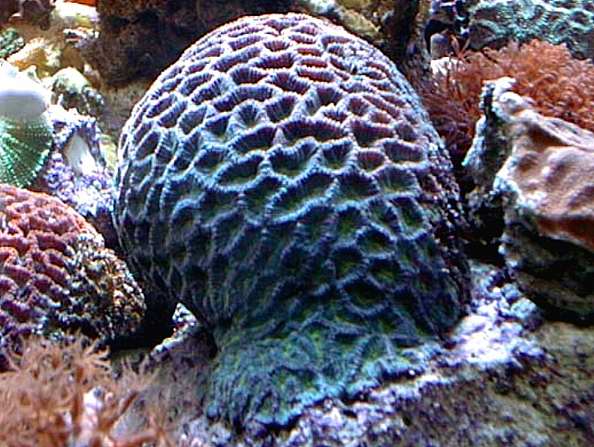
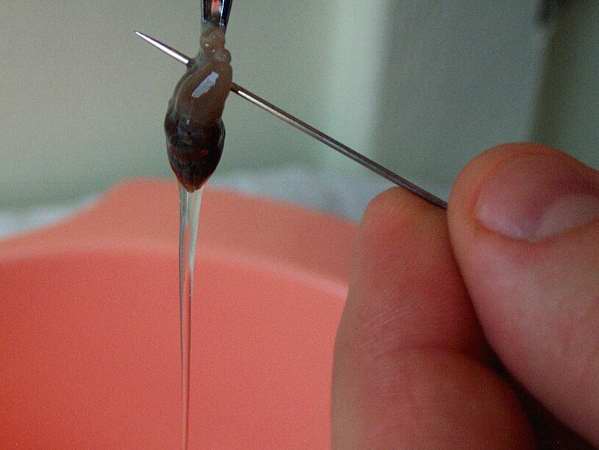
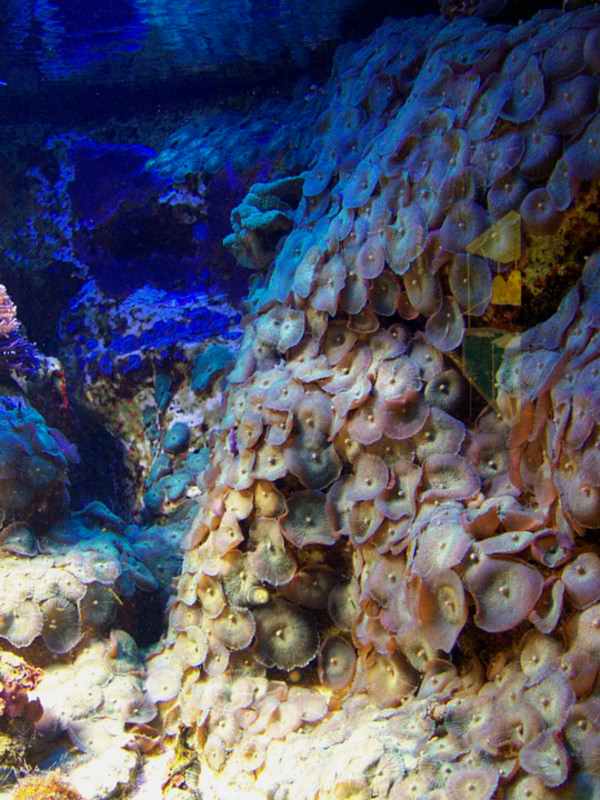
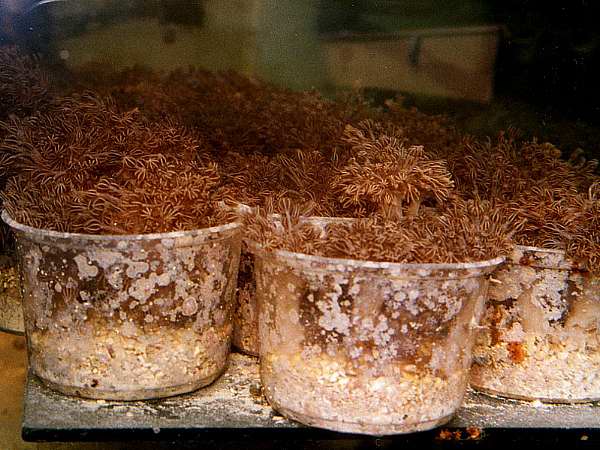
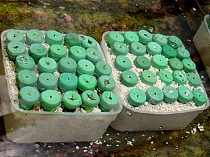
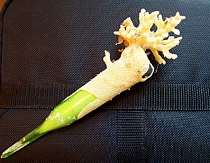
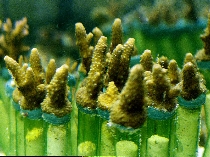
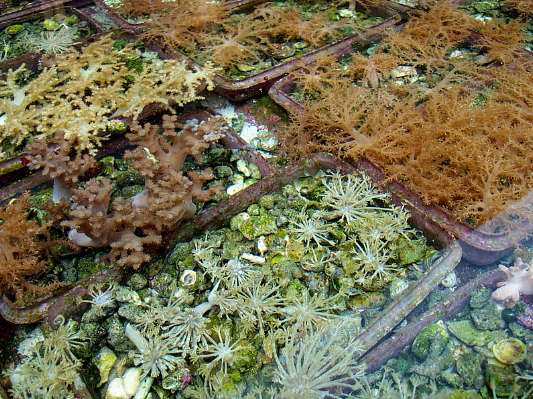



Tidak ada komentar:
Posting Komentar